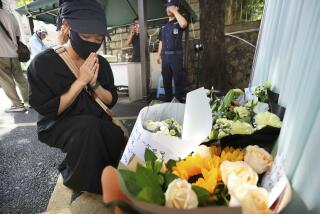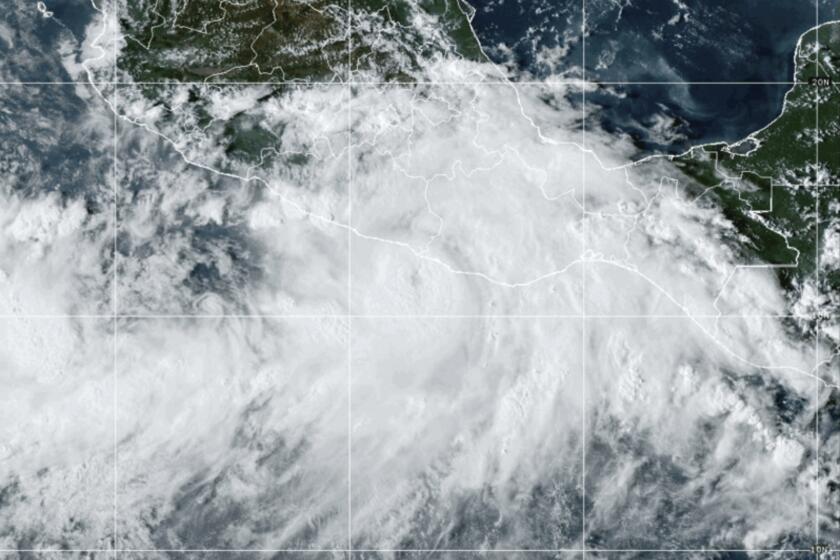Montgomery Night Flight Probe Asked
City Councilman Ed Struiksma has requested that the Federal Aviation Administration investigate why the local FAA office is not enforcing the city’s nighttime ban on practice takeoffs and landings at Montgomery Field.
Struiksma made the request after a small plane made a crash landing on Balboa Avenue about 6 p.m. Wednesday.
However, local FAA officials say the enforcement of such a policy is out of their jurisdiction and airport officials say the ban goes into effect at 11:30 p.m.
Pilot Bruce Goodwillie set the single-engine plane down on Balboa after he had engine trouble while making “touch and go” landings at Montgomery.
An FAA official said the plane was traveling about 60 m.p.h. when it touched down and that it hit at least four vehicles. Calvin Burns, whose car was crushed by the plane, was listed Friday in serious condition at Sharp Memorial Hospital.
In a letter to FAA Regional Director Homer McClure, Struiksma said the ban, which is included in the 1984 airport master plan, had been “grossly ignored” by local FAA officials. Struiksma said the regulation was one of 21 points added to the master plan and that at that time FAA officials supported it and agreed to enforce it.
A spokeswoman for the FAA Western Pacific Regional Office, Elly Brekke, said McClure had not yet received Struiksma’s letter and that the agency could not comment on the matter at this time.
San Diego FAA representative John Tompkins said the regulation was just submitted as part of the master plan, not a city ordinance.
“The master plan is a planning document, not a legal document,” Tompkins said. “We could not have agreed to enforce such a regulation because that would be the responsibility of the city. It was a unilateral decision by the city. Our job is to control airplanes, not to determine what the city wants done with its airport. Our enforcement would be similar to an FBI agent writing parking tickets.”
Tompkins said there is no mention of the nighttime ban in the Airport Facility Directory, the manual pilots refer to in order to be aware of current regulations.
“I know the FAA agreed to enforce the ban at that time,” Struiksma said. “I think this whole incident will bring the relationship between the City of San Diego and the FAA into focus. I do not know that practice landings have been occurring at the airport. If they have, that is in total defiance of this city’s policies.”
Tom Raines, Montgomery’s airport operations supervisor, said he believes the ban is enforceable only after 11:30 p.m.
“Right now there is really no city ordinance or regulation prohibiting nighttime touch and goes, although we do discourage them after the tower closes,” Raines said. “The master plan is just that--a master plan. Besides, the plane crashed at about 6:10 and the legal definition of nighttime is 30 minutes after sunset. That’s a fine line. That is irrelevant though, because there is no such ban.
“I have no way of knowing how many touch and goes have been occurring at nighttime. We don’t monitor them. We could have one, we could have a dozen. We log landings, but we have too many other things going on.”
Struiksma said he could not understand how anyone could interpret the policy to only be effective after 11:30 p.m.
Airport officials say the pilot had been cleared for his practice and was operating legally. In response to Struiksma’s request for action, Raines said airport officials “have to consider it because he suggested it.” He said the way the policy would be enforced is also being discussed.
More to Read
Sign up for Essential California
The most important California stories and recommendations in your inbox every morning.
You may occasionally receive promotional content from the Los Angeles Times.










